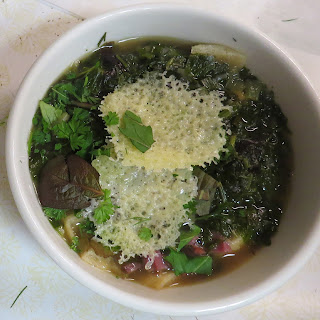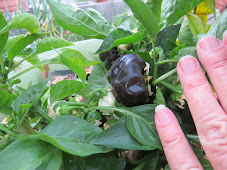Dear Folks,
Pictured my harvest this morning. I was out in the garden for a half hour enjoying the cool morning.
I will be reducing my presence on the Internet due to my ongoing health challenges.
Last year I was diagnosed with Cancer, and was symptom-free until the beginning of this year. The covid virus restrictions stole my year of expecting to enjoy all the normal things without restriction. I am not alone in this impact on my and my family's life.
I have enjoyed so very much sharing my gardening and cooking with you and I hope you chose to continue to find great resources out there. If there was a silver lining to the covid impact it is that many people realized they could get control of "their" food by growing some or more of it and feeling of impowerment was substantial.
I will be keeping the blog and my facebook page up as long as feasible. My website will be shutting down in a couple of months.
Meanwhile, as I can, I will be happy to answer questions on the facebook page ON any posts as they show up as an alert for me.
Apparently my blogger, blog page may be changing according to a google notice about how the 'feedburner' for your 'subscription' to my blog works and I have no control over that.
You can send me an email to my aol account which I hope to keep up running as long as possible.
herbstwoyou@aol.com
June 2020
http://edibleherbsandflowers.blogspot.com/2020/05/june-planting-tips-and-around-garden.html
July 2020
http://edibleherbsandflowers.blogspot.com/2020/06/july-planting-sowing-tips.html
August 2020
http://edibleherbsandflowers.blogspot.com/2020/07/august-planting-and-sowing-tips-and.html
September 2020
http://edibleherbsandflowers.blogspot.com/2020/08/september-plantingsowing-tips-non-soon.html
October 2020
http://edibleherbsandflowers.blogspot.com/2020/09/october-planting-and-sowing-tips.html
November 2020
http://edibleherbsandflowers.blogspot.com/2020/10/november-planting-tips-and-new-to-me.html
December 2020
http://edibleherbsandflowers.blogspot.com/2020/12/december-planting-tip.html
January 2019 (apparently I missed doing 2020 and 2021!
http://edibleherbsandflowers.blogspot.com/2019/12/january-planting-tips-ready-set.html
February 2021
http://edibleherbsandflowers.blogspot.com/2021/01/february-planting-tips.html
March 2021
http://edibleherbsandflowers.blogspot.com/2021/02/march-planting-tips.html
April 2021
http://edibleherbsandflowers.blogspot.com/2021/03/april-planting-tips.html
May 2021
http://edibleherbsandflowers.blogspot.com/2021/04/may-planting-tips-around-garden-and-more.html
Additional Post you may find helpful
This was the top 10 posts you liked in 2019. You can look on my right sidebar to see what is 'trending' :)
http://edibleherbsandflowers.blogspot.com/2020/01/top-ten-posts-for-2019-and-happy-new.html
Take care of you and your garden, be patient and kind to yourself and each other.
-- Catherine, The Herb Lady If you enjoyed this post, please share and subscribe below by entering your email, to get all my posts!
Disclaimer: Clicking on links on this blog may earn me a small commission if you purchase something. Your price does not change.


















































